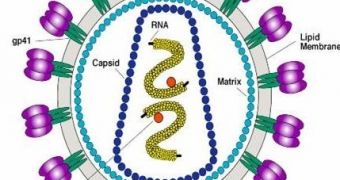The idea that HIV infiltrated slow and steady in London is infirmed by a new research. The study published in "PLoS Medicine" shows that the rapid growth of the HIV/AIDS epidemic during the late 1990s, in the gay community of London, was episodic, with multiple clusters of transmission in a few years, explaining the doubling of the number of the cases during that period.
Usually, reconstruction of sexual contact networks has been made by interviewing infected people. But this information has been of limited use in understanding HIV transmission patterns, because of the long incubation period of HIV, a period when the virus can be transmitted, and because the risk of infection from just one sexual encounter is low.
But the team of researchers from the University of Edinburgh and London's Chelsea and Westminster Hospital, and led by Andrew Leigh Brown, employed phylogenetics in determining the spread of HIV, a method that assesses the DNA kinship of viruses achieved from different individuals.
HIV DNA is routinely analyzed in the viral resistance tests meant to apply the best HIV medications for a patient. The team compared the HIV DNA sequences in over 2,000 patients, mainly gay men, at a large London HIV clinic. The samples were taken between 1997 to 2003. 402 DNA sequences closely matched at least one other viral sequence in the research poll. These patients made six clusters of ten or more individuals, but also many smaller clusters, betrayed by the genetics of the HIV types.
The time when each sample was collected, correlated with the mutation rate of HIV, delivered the time of phylogenies (relationship between the virus strains) within the clusters.
Most infections within each cluster took place in periods of 3-4 years during the late 1990s, and more than 25% of the infections occurred in individuals belonging to large clusters within 6 months following infection of the transmitting partner. HIV transmission during the incipient stages of infection appeared to be a main cause of the epidemic.
Information on sexual contact networks can be employed for notifying the partners and developing effective community-based prevention strategies.

 14 DAY TRIAL //
14 DAY TRIAL //